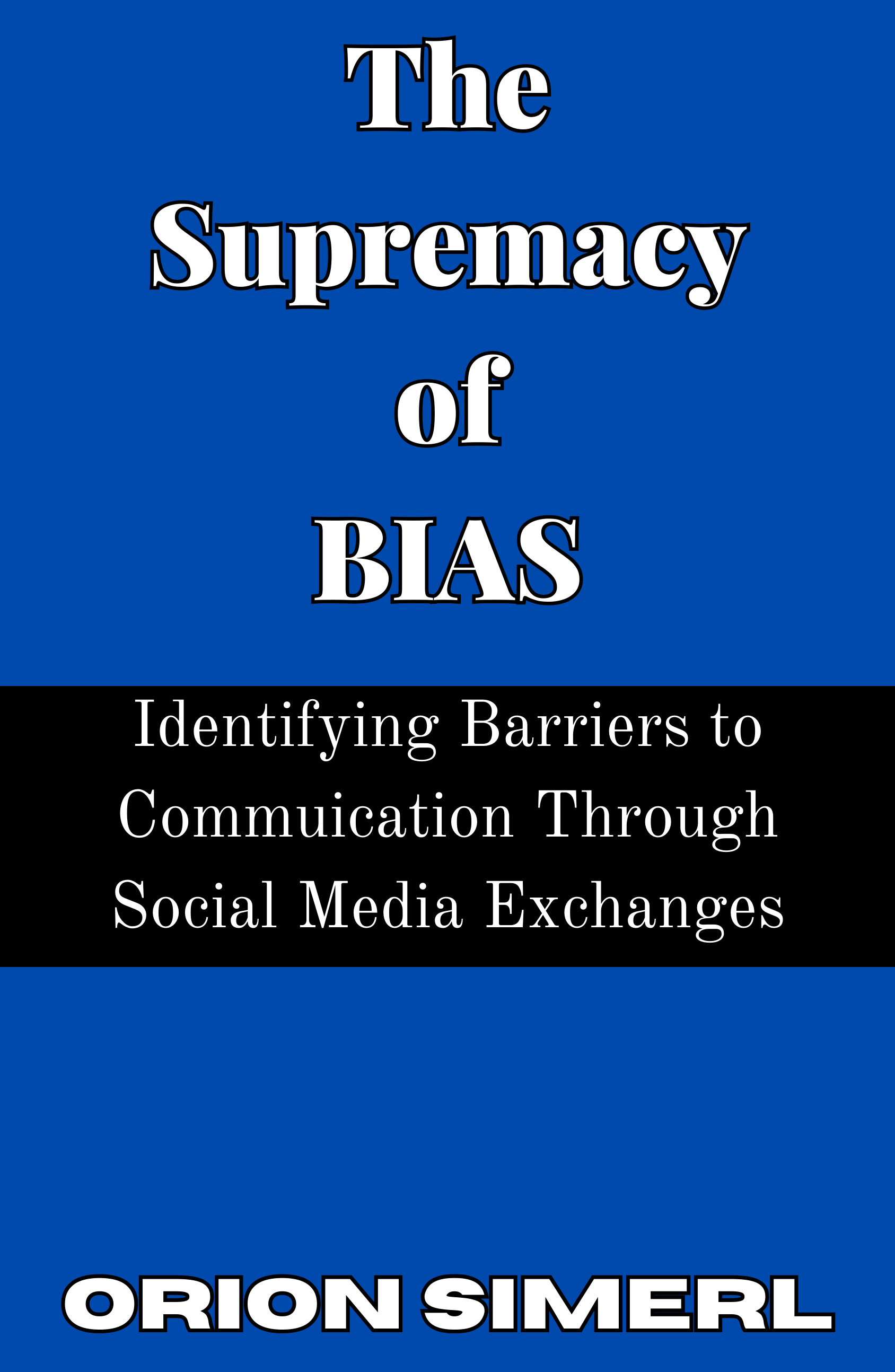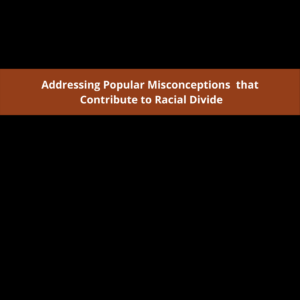Description
Introduction
The Supremacy of Bias is the human tendency to avoid, ignore, or reject information that challenges one’s beliefs through mechanisms intended to protect values. Supremacy in the sense that the protection of values is paramount and the beliefs that support a person’s value structure cannot be changed through exposure to fact, reason, or contradiction. The Supremacy of Bias is a title that describes the broader human condition to prioritize value supporting beliefs over observation in making assignments of true and false. The term I use to describe the mechanisms of avoidance, ignoring, or rejecting information to preserve values is value protective denial.
Avoidance takes place through a threat response of varying degrees because challenging information endangers people’s values of objects. Most of what people like is based on what they believe, so changing what they believe changes what they like.
For example, a devout Christian feels good when they read their bible, go to church, pray, and generally act in a way their deity approves of. If the deity isn’t real all these activities they derive joy from can no longer produce that joy. More importantly, for a religious person a substantial amount of their self worth is determined by what they believe the deity’s opinion of them is. This is generally determined by how consistent their actions are with what they believe the deity wants them to do. Discovering the deity isn’t real means all the accumulated positive perceptions for obeying the deity may be voided. Self worth is a value that can be threatened by challenging information.
Another example to better illustrate the self worth aspect is a racial justice activist. They participate in activities promoting racial justice. Discovering race is not a significant source of disadvantage takes away the ability of those activities to produce positive feelings. Maybe more importantly, the person sees themself as something that they like for those efforts, if race is not a significant source of disadvantage self worth will suffer. Noble acts become worthless acts, and a portion of identity is lost. If a history of acts is perceived as being good based on a false belief, correcting the belief causes those acts to go from good to neutral or good to bad. Identity is lost through the adjustment of perspective.
The mechanism operates through any belief that serves as a basis for value. Sometimes not even connected to value, because self worth can be reduced for having believed something that is false. Avoidance, ignoring, and rejection of challenging information occurs due to a threat response because an individual’s value structure is in danger.
Avoidance is largely subconscious, where objectives are not created to pursue challenging information, and challenging information typically creates stress, so when confronted with challenging information a person may remove themselves from it to eliminate the associated stress. The incidents where they are exposed to challenging information and experience stress because of the threat to their value structure creates assignments of negative value to challenging information that leads to the subconscious avoidance, objective creation that excludes exposure to challenging information. For example, a republican listens to NPR on the radio and the information undermines their beliefs and there is a negative feeling. The negative feeling represents a threat to the values supported by the challenged belief. They turn the channel, and in the future they avoid the radio station because that negative feeling from the previous incident is the assignment of value for that objective.
A person may ignore information that challenges their beliefs. They don’t acknowledge it. If the information is understood, the rationale is often that they don’t have the answer but somebody else does. This is a conscious act.
Rejection is subconscious, and something I understand through introspection. During less developed times in my life I could be confronted by a piece of information and it wouldn’t connect it to the information I had about the subject. Later in life something may prompt the memory and I’ll understand the point, but in the moment I couldn’t understand it due to the consequences it had to my value structure. Subconscious rejection is important to acknowledge, because it can appear as an inability to understand, but that inability isn’t based on some cognitive deficiency, it’s based on protecting their value structure. It reveals they have values higher than truth, which also means they do not understand the utility of truth in service to their own interests and the interest of others.
The first consequence is self-deception causes people to like what they wouldn’t like and do what they wouldn’t do. Self deception harms motivation.
Second, self deception limits intelligence because people cannot learn things that challenge their beliefs.
Lastly, and most importantly, self deception serves as a barrier to communication, because fact cannot be established. This has profound consequences in a republic where policy is at least superficially influenced by popular opinion. Inside and outside of civic engagement and lack thereof, the perspectives of the people, the beliefs these perspectives are built on contribute to what exists in this country. People believing things that are false and being ignorant of important things plays a role in the production of other people’s circumstances.
Within our conscious experience, reality consists of objects in motion within space and time. This perception is evident in our most basic questions, who, what, where, when , why, and how. Who and what identify objects, where is a position in space, when is a position in time, why is an assignment of cause, and how is assignments of cause and effect. In the absence of language, who, what, where, when, why, and how are still questions that human beings would ask to identify objects and sequence these objects according to cause and effect.
Objects are defined through our senses, and motion consists of cause and effect. This means all complexity reduces to objects in cause and effect sequencing. Since all people are capable of defining objects and are equipped with innate abilities to understand cause and effect, all people have the potential to understand all things. Inborn cognitive disabilities notwithstanding. Values direct attention and interest, and the preservation of values limits what a person is able to learn.
I look at national and world problems and recognize that while some of it is based on differences of interest, most of it is based on an inability to communicate. Most problems rooted in a difference of interest are facilitated by the inability to communicate.
Another limiter of intelligence is authority based sequencing. This is the propensity of people to count opinion as fact. Instead of objects being organized according to their observed motion, organization takes place through the authority serving as the cause that makes the opinion equal to fact. Counting opinion as fact often prohibits the person from understanding the subject. In many cases such a person has no interest in understanding the subject and is invested in the opinion because it reinforces other beliefs.
The broader implications of authority based thinking is reality becomes arbitrary, since there are authorities of differing opinions, and the only thing required for a person to believe a position is valid is for an authority to legitimize it, or for enough people to believe it. Reality becomes subjective, people believe whatever feels good, and the absence of cohesion is filled with faith that missing pieces and contradictory ideas are accounted for somewhere. Reconciliation of contradiction and missing causes takes place through the idea that their authorities have the answers to produce the cohesion that they do not.
The following are examples of communication being unable to take place because of authority based thinking or the maintaining of beliefs in the interest of preserving values. The exchanges are organized with a letter and number system to reference each comment and the corresponding response. In between comments there is analysis identifying the points made by both parties and how those points follow from the previous or do not follow from the previous points or content. It’s a simpler format than it may sound like in this description.
The content and subjects are for the most part important, but the purpose of this book isn’t to prove my positions through social media exchanges. This isn’t about me being right in the controversy, it’s about showing how challenging information is ignored and rejected to protect values. It’s about the participants’ biases preventing them from learning things that challenge their beliefs, and examples of people maintaining positions that are clearly wrong.
I participated in these exchanges because I had no other outlet for my ideas. I participated in social media exchanges in the past and expected the responses I received. Expectations along the lines of disagreement without a sustained point to support that disagreement. Something I’ve experienced not only on social media, but in oral communication, in person, over the phone, email, publishing submissions, etc. When I began the exchanges I didn’t intend to create a project/study out of them. I did begin incorporating some of the exchanges into my journal in recognizing their utility to explaining human behavior and seeing a benefit in chronicling the examples.
I participated frequently for a few months. Then I stopped because there was no benefit. Communication wasn’t taking place to any meaningful degree, I wasn’t gaining anything in learning objections because the objections were not valid, and it wasn’t attracting any attention to my material as far as I could tell. When I decided to do the project, culling the exchanges, copying the content, I commented on posts, and made posts that led to exchanges. 9 of the examples occurred prior to my intention to compile this project and 5 of them as I was compiling.
The time of the exchanges is inconsequential because the content of the exchanges pertains exclusively to the controversy, and in some cases, expressing my thoughts about what is occurring to produce the participants’ responses. The content attests to the exchanges being honest efforts to arrive at a resolution to the controversy, not an effort to provoke responses that could be used as evidence and examples of bias. Such efforts are probably not possible, because evidence of bias begins with the inability to overcome a point that demonstrates a contradiction of fact or reasoning. There isn’t a way to bait someone into not overcoming an argument that shows a deficiency in their position. For those reasons, the fact that 9 exchanges took place prior to my intention to do this project, and 5 took place after I decided to do this project is inconsequential to the integrity of the exchanges, but it seemed like something I should disclose. Additionally, of the 5 exchanges that took place while I was compiling and writing analysis, one was in response to my post, three were people responding to my comment, and only one was an exchange created from a post I responded to. Relevant in the sense that the additions that took place after I began the project were people responding to me, not me responding to others in an effort to provoke controversy. The 5 exchanges that occurred after I began project efforts are Series B, C, F, M, and N.
I had a lot of exchanges to choose from. The exchanges were culled based on the depth and clarity of the example, and in some cases, the quality of the subject. I began with 10, but that number grew in order to improve overall cohesion. Where the subjects flow together in a way that both demonstrates contrast in respect to positions held by opposing factions, and where a discussed subject may have content that’s applicable to other subjects. The final exchange is much less about the bias of the participant, and more of an exchange I included because the content was relevant to the overall conclusion of this project. There are certainly more I would have liked to include, but it was becoming lengthy, and I didn’t know if additional examples would become tedious to read. I originally planned on inserting the screenshots into the document and there are 353 screenshots documenting these 14 exchanges. The word processor or my hardware will not support that many images. If it could, for many people it will be inaccessible, and result in excessively long load times. To remedy this issue the screenshots portion provides a link to the google drive folder where the screenshots are organized.
NOTE: To download book, return to page after purchase and the download option will be available on the page.






Reviews
There are no reviews yet.